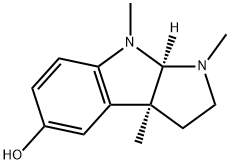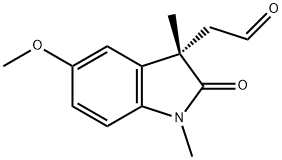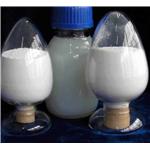Description
Eseroline is a drug which acts as an opioid agonist. It is a metabolite of the acetylcholinesterase inhibitor physostigmine but unlike physostigmine, the acetylcholinesterase inhibition produced by eseroline is weak and easily reversible, and it produces fairly potent analgesic effects mediated through the μ-opioid receptor.
Chemical Properties
Physostigmine crystals or solutions, when heated, exposed to light and air, or in the presence of traces of metal, readily turn red, are more unstable to bases, and are readily hydrolyzed to eserobine, which are capable of being oxidized to red physostigmine salicylate, depriving the product of its therapeutic efficacy.
Occurrence
Eseroline, although derived from physostigmine by hydrolysis of N-methylcarbamoil group, is also structurally related to morphine.
Uses
(-)-Eseroline is a metabolite of physostigmine, displaying both anti-acetylcholinesterase and opiate agonist activities.
Definition
ChEBI: Eseroline is a pyrroloindole that is 1,2,3,3a,8,8a-hexahydropyrrolo[2,3-b]indole substituted by methyl groups at positions 1, 3a and 8 and a hydroxy group at position 5. It is a metabolite of physostigmine and causes neuronal cell death by a mechanism involving loss of cell ATP. It has a role as an opioid analgesic and a human xenobiotic metabolite. It is a member of phenols and a pyrroloindole.
References
[1] RENZI G, BARTOLINI A, GALLI A, et al. The structure and action of eseroline: A new antinociceptive drug[J]. Inorganica Chimica Acta, 1980, 40. DOI:
10.1016/S0020-1693(00)92145-5.
[2] SOMANIS M KrishnaG KuttyR K. Eseroline, a metabolite of physostigmine, induces neuronal cell death.[J]. Toxicology and applied pharmacology, 1990. DOI:
10.1016/0041-008x(90)90102-z.
[3] BARTOLINI A, RENZI G, GALLI A, et al. Eseroline: A new antinociceptive agent derived from physostigmine with opiate receptor agonist properties. Experimental in vivo and in vitro studies on cats and rodents[J]. Neuroscience Letters, 1981, 25: 179-183. DOI:
10.1016/0304-3940(81)90328-1.




